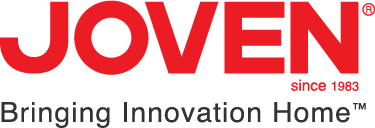The difference between Water Filtration and Water Purification
Access to clean water is essential for every household. In Malaysia, municipal tap water is treated to meet the National Drinking Water Quality Standards (MOH) and largely aligns with the World Health Organization (WHO) Drinking Water Guidelines. However, even treated tap water may still carry impurities such as sediments, rust, chlorine, and organic residues by the time it reaches your home.
To ensure safer, better-quality water for daily use, homeowners should adopt a comprehensive water treatment approach. This typically involves using both a Point of Entry (POE) water filter and a Point of Use (POU) water purifier system to cover all household water needs—from general washing to drinking and cooking.
This article explains the difference between water filtration and purification, and why installing a POE and POU system can make a significant difference for your home.
Understanding Water Filtration
Water filtration involves physically or chemically removing impurities by passing water through a filtration medium. The goal is to eliminate contaminants such as:
● Sediment (sand, dirt, rust)
● Visible particles
● Scale and deposits from pipelines
In a home water system, a Point of Entry (POE) filtration unit is installed at the main water inlet to treat all incoming water before it is distributed throughout the house.
A POE filtration system like the JWP20 is designed to:
● Remove harsh particles such as sediments and rust from the incoming water supply.
● Retain chlorine, which is important for maintaining disinfection as water travels through household plumbing.
This filtration process improves the overall water quality for general household activities such as bathing, washing clothes, cleaning, and water storage. It ensures that water is visually cleaner and free of debris while still meeting basic microbial safety requirements set by public health standards.
It is important to note that water filtration at the POE level focuses mainly on physical impurities. It does not specifically remove chlorine, dissolved chemicals, bacteria, or viruses.
Understanding Water Purification
Water purification targets a broader range of contaminants, aiming to improve water safety and quality specifically for direct consumption, such as drinking and food preparation.
Installed at individual taps, typically in the kitchen, Point of Use (POU) purification systems such as the JP300 and JP200 are designed to:
● Remove chlorine, odours, and unpleasant taste.
● Filter out finer impurities like organic compounds, heavy metals, and certain microorganisms.
● Enhance the overall safety and taste of water for drinking, cooking, and washing food.
Water purification complements the initial filtration by addressing contaminants that are not typically removed at the point of entry.
It is particularly valuable for households that want higher-quality drinking water that meets both aesthetic and health standards beyond the basic requirements of tap water.
Unlike POE filtration systems, POU purification units focus on fine filtration and chemical removal, making the water safer and more pleasant for direct human consumption.
Comparing the Two Methods
While both water filtration and water purification contribute to improving household water quality, they serve distinct roles within a complete water treatment system.
Water Filtration at the Point of Entry (POE), such as using the JWP20, focuses on:
● Removing larger, visible impurities such as sediments, rust, and dirt.
● Retaining residual chlorine to maintain disinfection throughout the plumbing system.
● Enhancing the general quality of water used for bathing, laundry, cleaning, and household chores.
This ensures that all water entering the home is cleaner and protects plumbing fixtures and household appliances from damage caused by particulate buildup.
Water Purification at the Point of Use (POU), such as with the JP300 or JP200, provides an additional layer of treatment by:
● Removing chlorine, odours, fine sediments, organic compounds, and heavy metals.
● Improving the taste, smell, and overall safety of the water specifically used for drinking and food preparation.
Purification ensures that water consumed by the household meets higher safety and quality standards, addressing both health and aesthetic concerns at the point of use.
Key Differences Between Filtration and Purification
| Aspect | Water Filtration (POE – JWP20) | Water Purification (POU – JP300/JP200) |
| Installation Location | Main water inlet | Kitchen tap or specific outlets |
| Main Purpose | Remove physical contaminants like sediment, dirt, and rust | Remove chlorine, odours, fine particles, and certain microorganisms |
| Chlorine Management | Chlorine is retained for disinfection | Chlorine is removed for better taste and safety |
| Focus Area | General household water for cleaning, bathing, laundry | Drinking water and water for cooking and washing food |
| Technology Type | Physical filtration | Fine filtration and chemical purification |
| Who Needs It | Households concerned about protecting plumbing, appliances, and improving general water cleanliness | Households wanting safer, better-tasting water for drinking, cooking, and food preparation |
Choosing What’s Right for You
Selecting between water filtration and purification — or combining both — depends on several important factors, including your water source, health priorities, and household needs.
Here are a few guiding questions to help determine the best solution:
Do you know what’s in your water?
If you're uncertain, it’s advisable to conduct a water quality test.
Testing can reveal the presence of:
● Sediments (sand, rust, dirt)
● Residual chlorine
● Heavy metals (lead, mercury)
● Microorganisms (bacteria, viruses)
Understanding the specific contaminants present in your water helps in selecting the right system — whether a basic filtration system is sufficient or if a purification step is necessary.
Are you using municipal tap water or a private source?
Municipal tap water in urban areas is generally treated and monitored. However, it may still carry residual chlorine, particulates, and taste or odour issues. In such cases, a POE filtration system combined with a POU purification unit enhances water quality and safety.
Private sources like well water, rainwater harvesting systems, or storage tanks may contain higher microbial or chemical risks. For these, adding a purification system at the point of use becomes crucial.
Do you want to preserve minerals?
Filtration systems typically retain naturally occurring minerals such as calcium and magnesium, which are important for overall health.
Purification systems — particularly Reverse Osmosis (RO) — tend to remove minerals along with contaminants.
Some systems include remineralization stages to add essential minerals back into the purified water for better taste and health balance.
What is your budget and maintenance preference?
Filtration systems (e.g., POE filters) usually have lower upfront costs and simpler maintenance, requiring periodic cartridge replacements.
Purification systems (e.g., RO or UV systems) have higher initial investment and involve maintenance activities such as:
● Membrane flushing
● UV lamp replacement
● System cleaning
Planning ahead for maintenance is important to ensure consistent performance and water quality.
Are you concerned about taste and odor?
Both filtration and purification can improve water taste.
Activated carbon filtration is particularly effective at removing chlorine and organic compounds, resulting in fresher-tasting, better-smelling water.
If you prioritize excellent water taste for drinking and cooking, a POU purification system would be a valuable addition.
A Combined Approach for Best Results
For many households, combining both filtration and purification offers the most comprehensive protection:
● A POE filtration system (such as Joven JWP20) ensures that all incoming water is free from sediment, rust, and larger impurities.
● A POU purification system (such as Joven JP300 or JP200) ensures that water used for drinking and food preparation is clean, safe, and great-tasting.
In some cases, additional enhancements like an alkaline filter stage can also be added to improve the mineral content and taste of drinking water.
Final Thoughts
Choosing the right water treatment solution for your home begins with understanding the different roles that filtration and purification play.
While Malaysia's municipal tap water meets national and WHO standards for basic safety, additional steps at the household level can further enhance water quality — improving both health protection and everyday comfort.
A Point of Entry (POE) system provides essential filtration by removing larger contaminants like sediment and rust, safeguarding the quality of water used throughout the home for cleaning, bathing, and washing. Meanwhile, a Point of Use (POU) system focuses on refining water at specific outlets, ensuring that the water you drink and cook with is free from chlorine, odours, heavy metals, and fine impurities.
By combining both POE and POU systems, homeowners can achieve a complete and effective approach to home water management — protecting plumbing systems, enhancing taste and odour, and providing greater peace of mind about water safety.
For those seeking reliable solutions tailored for Malaysian conditions, Joven Malaysia offers a comprehensive range of systems.
The Joven JWP20 serves as an effective POE water filter, while the Joven JP300 and JP200 provide high-quality POU purification options — ensuring cleaner, safer, and better-tasting water for every part of your home.





